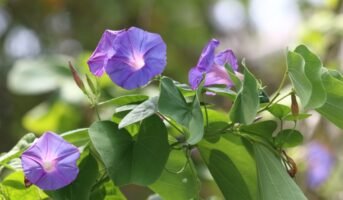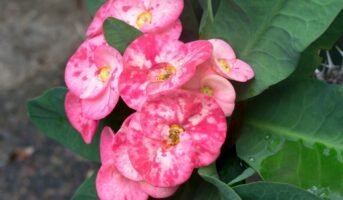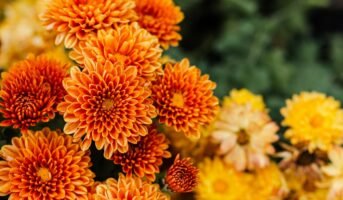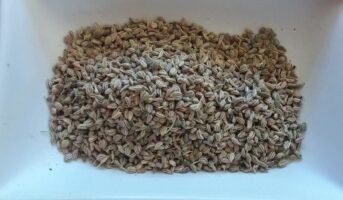Furcraea Foetida is a small plant that is native to the tropical rainforest of Central America. It has been used in traditional medicine, particularly by indigenous people in Central America, for its antibacterial properties. It is also commonly known as green aloe, giant cabuya and Mauritius hemp.
Furcraea Foetida is typically found growing in moist soil at elevations between 1,000-3,000 feet above sea level with little direct sunlight due to its limited range of distribution.
Furcraea Foetida plant is a perennial plant belonging to the family Asparagaceae. It has aromatic and fragrant flowers with white petals.

Source: Pinterest
Furcraea Foetida: Quick facts
| Botanical Name | Furcraea foetida |
|---|---|
| Common Name | Mauritius hemp |
| Genus | Furcraea |
| Family | Asparagaceae |
| Life Cycle | Evergreen perennial |
| Mature Size | Up to 4-5 ft. tall |
| Cultivation | Central America |
| Benefits | Used as insect repellent |
Furcraea Foetida: Physical description

Source: Pinterest
The plant can grow up to 5 feet tall and 8 feet wide. The leaves are spirally arranged, small, and have serrated margins. They have an entire margin and are borne on short stalks (peduncles). The leaves are covered in small hairs that help trap air and prevent water loss. These hairs give the plant a velvety feel and look like dew-covered cotton balls when they are wet. They also have white dots on them that give them an ethereal beauty.
Furcraea foetida: How to propagate?
- When you buy your Furcraea, it will come with an attached rootstock. This rootstock will grow into a new plant and allow you to propagate your own plants at home.
- There are two ways to propagate your Furcraea- by cutting the stem at ground level and then rooting it in water or by taking cuttings from the parent plant’s stems and planting them directly into the soil.
- Either method will work, but cutting a new section of stem from one of your existing plants and planting it somewhere where there is plenty of light is recommended.
- You should also keep in mind that if you choose to take cuttings from your Furcraea, they will not thrive unless they have been given plenty of water during their growing period, which could last anywhere from six months to a year.
With seeds
- Firstly, you need to select the right place for planting. You can either plant it in the garden or near a window where sunlight can reach the leaves.
- Next thing you need to do is prepare the soil before planting the seeds. You should ensure that the soil is well drained and contains enough nutrients, such as compost and manure so that it can flourish well in your yard or garden.
- You also need to check if there are any pests present in your garden or lawn area before planting Furcraea foetida as these pests may damage your plants during the growth stage; therefore, avoid them before they harm your plant.
With cuttings
- To propagate Furcraea foetida by division, use a sharp knife to cut a leaf at the base of the plant. Make sure to do this in spring or fall, so there is enough time for new roots to grow before winter comes.
- If you cut the leaf in summer, it will be too late for roots to develop, and your plant will die.
- Cut the leaf at an angle so it will not break off when taken from the stem.
- Use a sharp blade or scissors to remove any dead tissue from around where you want to take your cutting from. Then place it in water with a little bit of rooting hormone until you see new roots growing underneath it, usually within 48 hours.
See also: Rose flower: 30+ images and over 20 interesting facts about the heavenly flower
Furcraea Foetida: Maintenance tips
Furcraea foetida plants require moderate to high amounts of water during the growing season. During the winter, they must best be watered once every other week or so.
Furcraea foetida plants require a moderate amount of fertiliser each spring and fall. You should fertilise the plant regularly until growth slows down and then switch off in spring and fall.
Prune your Furcraea plant as needed to maintain desired shape and size. This will also encourage new growth and flower production later in the season if desired.
In the fall, remove any dead leaves from around the base of the plant. This will help prevent any disease from spreading throughout your garden or home.
See also: What is Hibiscus and how to grow it in your home?
Furcraea foetida: Uses
- Compared to pesticides and insecticides, it is a superior alternative. An insect repellent can be made from it.
- Digestive aids can be made from it.
- Fibre from its leaves can be turned into twine and rope.
Furcraea foetida: Toxicity
The leaves of Furcraea foetida are used to poison fish due to their high saponin content but are otherwise non-toxic.
FAQs
Are Furcraea foetida agaves?
No. Furcraea foetida just resembles a giant variegated Agave plant.
What’s the common name of Furcraea foetida?
Furcraea foetida is also known by the names green aloe, giant cabuya and Mauritius hemp.
Housing News Desk is the news desk of leading online real estate portal, Housing.com. Housing News Desk focuses on a variety of topics such as real estate laws, taxes, current news, property trends, home loans, rentals, décor, green homes, home improvement, etc. The main objective of the news desk, is to cover the real estate sector from the perspective of providing information that is useful to the end-user.
Facebook: https://www.facebook.com/housing.com/
Twitter: https://twitter.com/Housing
Email: [email protected]











